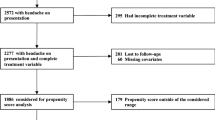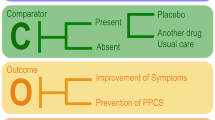Abstract
Following mild traumatic brain injury (TBI), patients may self-treat symptoms of concussion, including post-traumatic headache, taking over-the-counter (OTC) analgesics. Administering one dose of OTC analgesics immediately following experimental brain injury mimics the at-home treated population of concussed patients and may accelerate the understanding of the relationship between brain injury and OTC pharmacological intervention. In the current study, we investigate the effect of acute administration of OTC analgesics on neurological function and cortical cytokine levels after experimental diffuse TBI in the mouse. Adult, male C57BL/6 mice were injured using a midline fluid percussion (mFPI) injury model of concussion (6–10 min righting reflex time for brain-injured mice). Experimental groups included mFPI paired with either ibuprofen (60 mg/kg, i.p.; n = 16), acetaminophen (40 mg/kg, i.p.; n = 9), or vehicle (15 % ethanol (v/v) in 0.9 % saline; n = 13) and sham injury paired OTC medicine or vehicle (n = 7–10 per group). At 24 h after injury, functional outcome was assessed using the rotarod task and a modified neurological severity score. Following behavior assessment, cortical cytokine levels were measured by multiplex ELISA at 24 h post-injury. To evaluate efficacy on acute inflammation, cortical cytokine levels were measured also at 6 h post-injury. In the diffuse brain-injured mouse, immediate pharmacological intervention did not attenuate or exacerbate TBI-induced functional deficits. Cortical cytokine levels were affected by injury, time, or their interaction. However, levels were not affected by treatment at 6 or 24 h post-injury. These data indicate that acute administration of OTC analgesics did not exacerbate or attenuate brain-injury deficits which may inform clinical recommendations for the at-home treated mildly concussed patient.




Similar content being viewed by others
References
Allan SM, Rothwell NJ (2001) Cytokines and acute neurodegeneration. Nat Rev Neurosci 2:734–744. doi:10.1038/35094583
Bachstetter AD, Rowe RK, Kaneko M, Goulding D, Lifshitz J, Van Eldik LJ (2013) The p38alpha MAPK regulates microglial responsiveness to diffuse traumatic brain injury. J Neurosci 33:6143–6153
Banchereau J, Pascual V, O’Garra A (2012) From IL-2 to IL-37: the expanding spectrum of anti-inflammatory cytokines. Nat Immunol 13:925–931. doi:10.1038/ni.2406
Browne KD, Iwata A, Putt ME, Smith DH (2006) Chronic ibuprofen administration worsens cognitive outcome following traumatic brain injury in rats. Exp Neurol 201:301–307
Cao T, Thomas TC, Ziebell JM, Pauly JR, Lifshitz J (2012) Morphological and genetic activation of microglia after diffuse traumatic brain injury in the rat. Neuroscience 225:65–75
Chen Y, Constantini S, Trembovler V, Weinstock M, Shohami E (1996) An experimental model of closed head injury in mice: pathophysiology, histopathology, and cognitive deficits. J Neurotrauma 13:557–568
Chio CC, Chang CH, Wang CC et al (2013) Etanercept attenuates traumatic brain injury in rats by reducing early microglial expression of tumor necrosis factor-alpha. BMC Neurosci 14:33
Dani M, Guindon J, Lambert C, Beaulieu P (2007) The local antinociceptive effects of paracetamol in neuropathic pain are mediated by cannabinoid receptors. Eur J Pharmacol 573:214–215. doi:10.1016/j.ejphar.2007.07.012
Dash PK, Mach SA, Moore AN (2000) Regional expression and role of cyclooxygenase-2 following experimental traumatic brain injury. J Neurotrauma 17:69–81
Faul M, Xu L, Wald MM, Coronado VG (2010) In: Centers for disease control and prevention NCfIPaC (ed) Traumatic brain injury in the United States: emergency department visits, hospitalizations and deaths 2002–2006. Atlanta, GA
Frugier T, Morganti-Kossmann MC, O’Reilly D, McLean CA (2010) In situ detection of inflammatory mediators in post mortem human brain tissue after traumatic injury. J Neurotrauma 27:497–507
Gabay C, Kushner I (1999) Acute-phase proteins and other systemic responses to inflammation. N Engl J Med 340:448–454
Gatson JW, Liu MM, Abdelfattah K, Wigginton JG, Smith S, Wolf S, Minei JP (2013) Resveratrol decreases inflammation in the brain of mice with mild traumatic brain injury. J Trauma Acute Care Surg 74:470–474; discussion 474–475
Gopez JJ, Yue H, Vasudevan R et al (2005) Cyclooxygenase-2-specific inhibitor improves functional outcomes, provides neuroprotection, and reduces inflammation in a rat model of traumatic brain injury. Neurosurgery 56:590–604
Hosseini AH, Lifshitz J (2009) Brain injury forces of moderate magnitude elicit the fencing response. Med Sci Sports Exerc 41:1687–1697
Langlois JA, Rutland-Brown W, Wald MM (2006) The epidemiology and impact of traumatic brain injury: a brief overview. J Head Trauma Rehabil 21:375–378
Lifshitz J (2008) Fluid percussion injury In: Chen J, Xu X-M, Zhang J (eds) Animal models of acute neurological injuries. The Humana Press Inc., Totowa, NJ
Lloyd E, Somera-Molina K, Van Eldik LJ, Watterson DM, Wainwright MS (2008) Suppression of acute proinflammatory cytokine and chemokine upregulation by post-injury administration of a novel small molecule improves long-term neurologic outcome in a mouse model of traumatic brain injury. J Neuroinflammation 5:28
Maiese K (2008) Head injuries: diagnosis and treatment. In: The merck manual home health handbook, vol 2013. Merck Sharp & Dohme Corp., Whitehouse Station, NJ
Morganti-Kossmann MC, Rancan M, Otto VI, Stahel PF, Kossmann T (2001) Role of cerebral inflammation after traumatic brain injury: a revisited concept. Shock 16:165–177
Morganti-Kossmann MC, Rancan M, Stahel PF, Kossmann T (2002) Inflammatory response in acute traumatic brain injury: a double-edged sword. Curr Opin Crit Care 8:101–105
Ng SY, Semple BD, Morganti-Kossmann MC, Bye N (2012) Attenuation of microglial activation with minocycline is not associated with changes in neurogenesis after focal traumatic brain injury in adult mice. J Neurotrauma 29:1410–1425
Ottani A, Leone S, Sandrini M, Ferrari A, Bertolini A (2006) The analgesic activity of paracetamol is prevented by the blockade of cannabinoid CB1 receptors. Eur J Pharmacol 531:280–281. doi:10.1016/j.ejphar.2005.12.015
Pleasant JM, Carlson SW, Mao H, Scheff SW, Yang KH, Saatman KE (2011) Rate of neurodegeneration in the mouse controlled cortical impact model is influenced by impactor tip shape: implications for mechanistic and therapeutic studies. J Neurotrauma 28:2245–2262
Prins M, Greco T, Alexander D, Giza CC (2013) The pathophysiology of traumatic brain injury at a glance. Dis Model Mech 6:1307–1315
Reagan-Shaw S, Nihal M, Ahmad N (2008) Dose translation from animal to human studies revisited. FASEB J 22:659–661
Reilly P (2007) The impact of neurotrauma on society: an international perspective. Prog Brain Res 161:3–9. doi:10.1016/S0079-6123(06)61001-7
Roozenbeek B, Maas AI, Menon DK (2013) Changing patterns in the epidemiology of traumatic brain injury. Nat Rev Neurol 9:231–236
Rowe RK, Harrison JL, Thomas TC, Pauly JR, Adelson PD, Lifshitz J (2013) Using anesthetics and analgesics in experimental traumatic brain injury. Lab Anim (NY) 42:286–291
Rowe RK, Harrison JL, O’Hara BF, Lifshitz J (2014a) Recovery of neurological function despite immediate sleep disruption following diffuse brain injury in the mouse: clinical relevance to medically untreated concussion sleep. Sleep 37:743–752
Rowe RK, Striz M, Bachstetter AD, Van Eldik LJ, Donohue KD, O’Hara BF, Lifshitz J (2014b) Diffuse brain injury induces acute post-traumatic sleep. PLoS ONE 9:e82507. doi:10.1371/journal.pone.0082507
Schmidt OI, Heyde CE, Ertel W, Stahel PF (2005) Closed head injury—an inflammatory disease? Brain Res Brain Res Rev 48:388–399
Semple BD, Bye N, Rancan M, Ziebell JM, Morganti-Kossmann MC (2010) Role of CCL2 (MCP-1) in traumatic brain injury (TBI): evidence from severe TBI patients and CCL2−/− mice. J Cereb Blood Flow Metab 30:769–782
Setnik L, Bazarian JJ (2007) The characteristics of patients who do not seek medical treatment for traumatic brain injury. Brain Inj 21:1–9
Thau-Zuchman O, Shohami E, Alexandrovich AG, Trembovler V, Leker RR (2012) The anti-inflammatory drug carprofen improves long-term outcome and induces gliogenesis after traumatic brain injury. J Neurotrauma 29:375–384
Theeler B, Lucas S, Riechers RG 2nd, Ruff RL (2013) Post-traumatic headaches in civilians and military personnel: a comparative, clinical review. Headache 53:881–900. doi:10.1111/head.12123
Vane JR (1971) Inhibition of prostaglandin synthesis as a mechanism of action for aspirin-like drugs. Nat New Biol 231:232–235
Wang KK, Larner SF, Robinson G, Hayes RL (2006) Neuroprotection targets after traumatic brain injury. Curr Opin Neurol 19:514–519
Werner C, Engelhard K (2007) Pathophysiology of traumatic brain injury. Br J Anaesth 99:4–9. doi:10.1093/bja/aem131
Woodcock T, Morganti-Kossmann MC (2013) The role of markers of inflammation in traumatic brain injury. Front Neurol 4:18. doi:10.3389/fneur.2013.00018
Ziebell JM, Morganti-Kossmann MC (2010) Involvement of pro- and anti-inflammatory cytokines and chemokines in the pathophysiology of traumatic brain injury. Neurotherapeutics 7:22–30
Ziebell JM, Bye N, Semple BD, Kossmann T, Morganti-Kossmann MC (2011) Attenuated neurological deficit, cell death and lesion volume in Fas-mutant mice is associated with altered neuroinflammation following traumatic brain injury. Brain Res 1414:94–105
Acknowledgments
Research reported in this publication was supported, in part, by National Institute of Neurological Disorders and Stroke of the National Institutes of Health under award number R01NS065052, R01NS065052-S, R21NS072611, and KSCHIRT 10-5A.
Author information
Authors and Affiliations
Corresponding author
Additional information
Jordan L. Harrison and Rachel K. Rowe contributed equally to the design, execution, and interpretation of the study.
Rights and permissions
About this article
Cite this article
Harrison, J.L., Rowe, R.K., O’Hara, B.F. et al. Acute over-the-counter pharmacological intervention does not adversely affect behavioral outcome following diffuse traumatic brain injury in the mouse. Exp Brain Res 232, 2709–2719 (2014). https://doi.org/10.1007/s00221-014-3948-3
Received:
Accepted:
Published:
Issue Date:
DOI: https://doi.org/10.1007/s00221-014-3948-3




